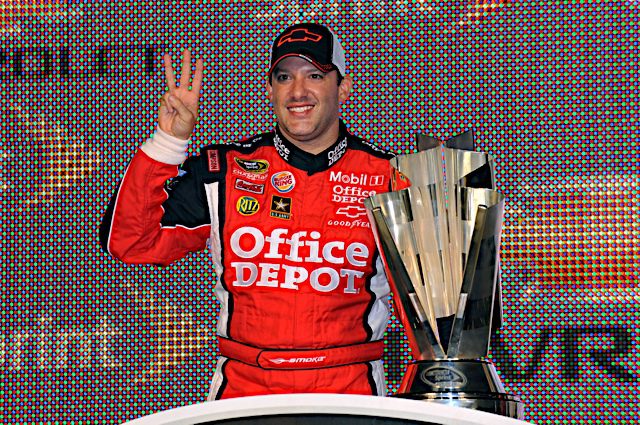For nearly the last 20 seasons, the NASCAR landscape has included — and sometimes been dominated by — the playoffs.
Since 2004, NASCAR has had some form of “postseason,” which has continued to have mixed reaction from fans, mainly in an attempt to keep the final stretch of a very long season exciting to fans (not to mention to attempt to compete with NFL football season).
The playoffs (formerly the Chase for the Championship) have had some moments. You don’t have to look very far back to find history being made; 2022 has already featured the most wins from non-contending drivers ever. The entire opening round of three races were won by drivers not eligible for the driver’s title and the second round opened with a win from a driver who was eliminated the week before.
The playoff system has undergone an evolution before arriving at the current format, but one season in particular stands out (and probably had a major influence on the current setup). Now, the season always comes down to the final race thanks to the rulebook, but in 2011, it came down to the final laps without multiple eliminations and resets along the way.
That was the year it ended in a tie.
If the 1992 finale is the gold standard for title races (it came down to six drivers without any playoff system in place), 2011 is the best playoff run the sport ever produced. The current system ensures that the season will never again end on a tiebreaker.
NASCAR didn’t reward the driver leading the points before the playoff reset at the time, but after 26 races Kyle Busch held a slim three-point lead over defending (defending defending defending defending) champion Jimmie Johnson. After the playoff reset, Kevin Harvick shared the top spot with the younger Busch. The 12 contenders were separated by a mere 12 points as the playoffs kicked off. Officially seeded last on a tiebreaker was two-time champion Tony Stewart, whose season hadn’t been anything to write home about.
Stewart didn’t win in the first 26 races and only had three top-five finishes to his name. He had a couple of runner-up finishes but didn’t look like a title contender.
Carl Edwards entered the final 10 races a few points ahead of Stewart. Edwards had one win, in March at Las Vegas Motor Speedway (a race in which Stewart finished second) but a whopping 17 top 10s. He seemed like a more likely prospect than Stewart, though probably wasn’t on a lot of people’s lists as the frontrunner.
For a lot of…
Click Here to Read the Full Original Article at Frontstretch…

